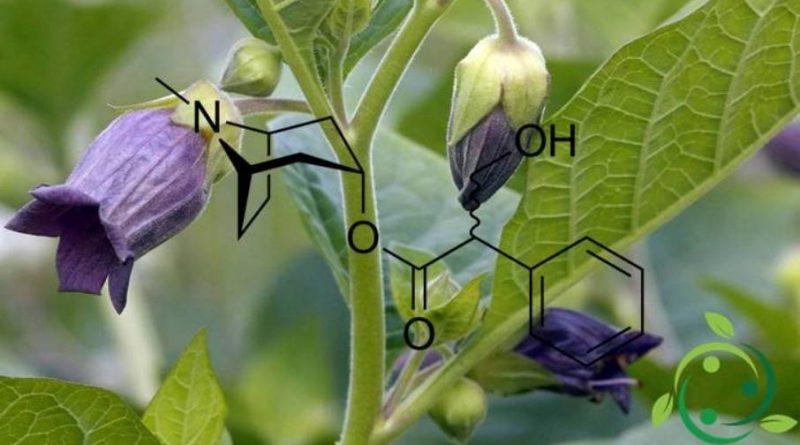The Atropine
The Atropine
Atropine or hyoscyamine is a tropan-alkaloid present in several plants of the Solanaceae family such as Atropa belladonna, Datura stramonium and Hyoscyamus niger. The official name of the IUPAC nomenclature is: (8-methyl-8-azabicyclo [3.2.1] oct-3-yl) 3-hydroxy-2-phenylpropanoate, whereas the brute or molecular formula is: C17H23NO3.
At the level of extraction from plant essences, the most common sources of atropine are the Atropa belladonna, the Datura inoxia, the D. metel, and the Stramonium. It is also present in some plants of the genera Brugmansia and Hyoscyamus.
This alkaloid was isolated from the Achaean belladonna in 1931 by Mein and subsequently obtained by synthesis with different procedures, none of which however took industrial interest. Some of the pharmacological properties of atropine had been exploited several centuries before the alkaloid was identified. Already at the time of Louis XIV the belladonna extract was widely used, for its midriatico power, in feminine cosmetics, considering the dilated pupil an element of elevated aesthetic value. It is also known that since the century XIV belladonna extract was the remedy of election against dysmenorrhea and urinary incontinence.
The pharmacological and therapeutic interest of atropine derives from its ability to antagonize the effects of the cholinergic mediator of nerve transmission (acetylcholine) in the exocrine glands, the myocardium, the smooth muscles in the gastrointestinal, respiratory, urinary and vascular systems.
In therapy the alkaloid is used, especially in the form of sulfate, intravenously or subcutaneously, or in ointments, tablets or solutions for ophthalmic use. There are numerous therapeutic indications, although the field of application is delimited by high toxicity and multiple side effects. Atropine has long been the drug of choice in the treatment of Parkinson’s disease, and to this end it is often still used today in association with various synthetic drugs. Currently the main uses of alkaloid are for the treatment of peptic ulcer, spastic states of the gastro-intestinal tract and genito-urinary, for poisoning by anticholinesterase substances (organophosphorus pesticides, Amanita muscaria type fungi).
The drug also has a certain importance in surgical pre-anesthesia as it inhibits salivation and bronchial secretions and reduces the irritating effect of gaseous anesthetics. In ophthalmology its midriatic properties are exploited both for diagnostic purposes (that is to facilitate the complete examination of the retina) and for healing purposes (acute iritis, iridocyclitis, keratitis). The most common side effects of atropine are tachycardia, dry mouth, visual disturbances, photophobia, constipation, urinary retention. Acute intoxication of atropine is a rare occurrence of species in childhood, given the high sensitivity of the child to the action of the alkaloid.
Atropine is also used against nerve gas intoxication; atropine antagonizing at cholinergic receptor level the effect of acetylcholine, no longer destroyed by the enzyme inhibited by the nerve, limits the effects of nerve poisoning and is able to save lives from intoxicants. For this reason, soldiers operating in environments potentially at risk of contamination with nerve gas, are supplied with atropine syringes for immediate self-administration.

